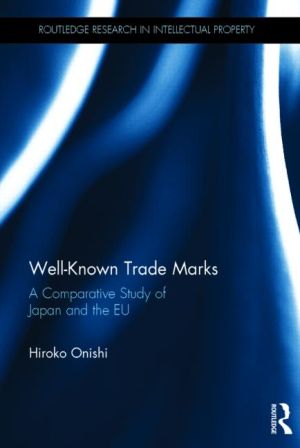
This book considers the efficacy of well-known trade mark protection at an international level, and in the EU and Japan. The book provides a comprehensive and critical overview of trade mark law in Japan, including the historical development of the law and the recent developments in the case law and policy. It includes detailed coverage of the Japanese Unfair Competition Prevention Act, and contains the first systematic analysis of Japanese jurisprudence and legislative amendments of law in relation to well-known trade marks and unfair competition, in order to allow readers to get to grips with trademark law in this important jurisdiction.
The book goes on to comparatively analyse Japanese trade mark law alongside that of the European Community Trade Mark system. The book covers both protection against confusion and also the anti-dilution provisions of the Trade Marks Directive and recent European case law in this area. The book explores the difficulties in comprehensively defining a 'well-known trade mark' in the relevant international trade mark instruments. It challenges the traditional approach to the definition of 'well-known trade mark', that is "we do not know what it is, but we all know when we see it" and sets out a new theoretical model for defining well-known trade marks.